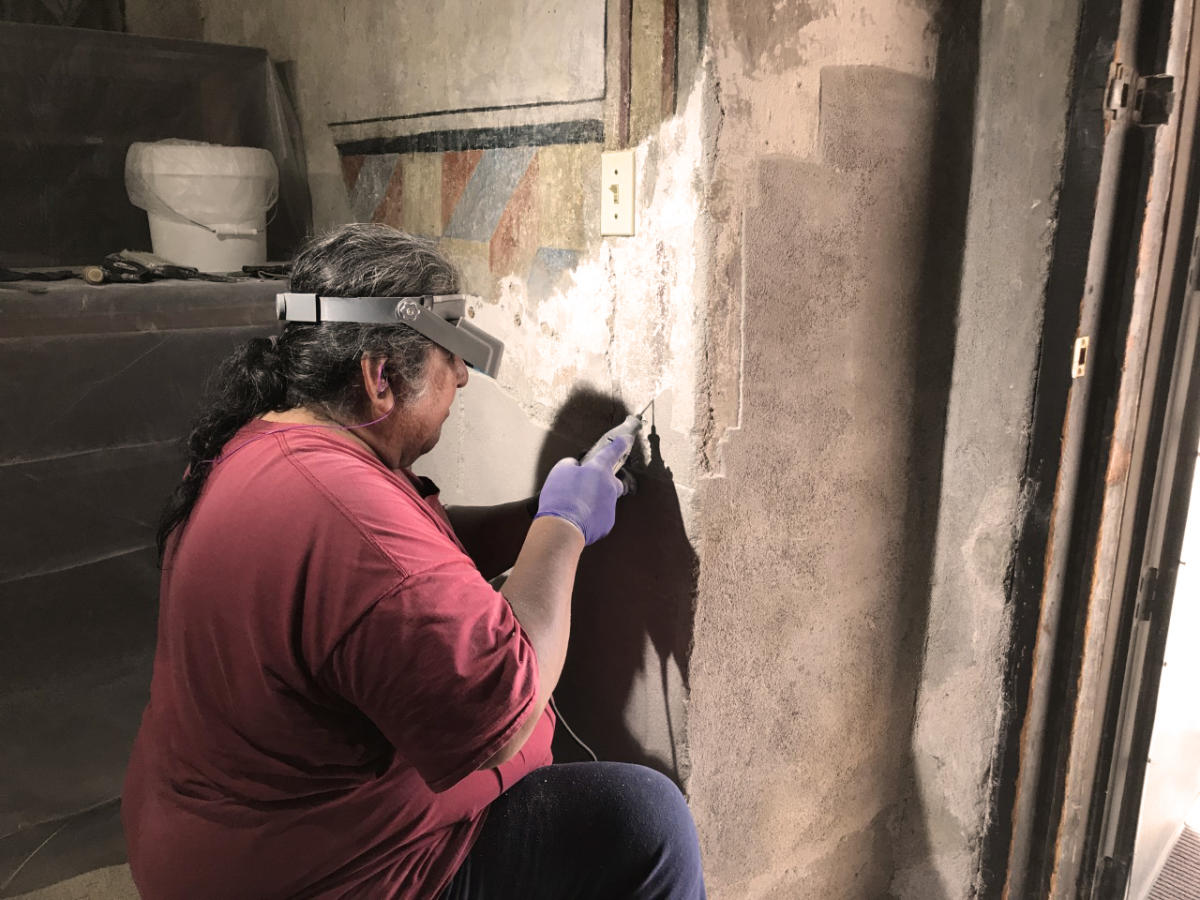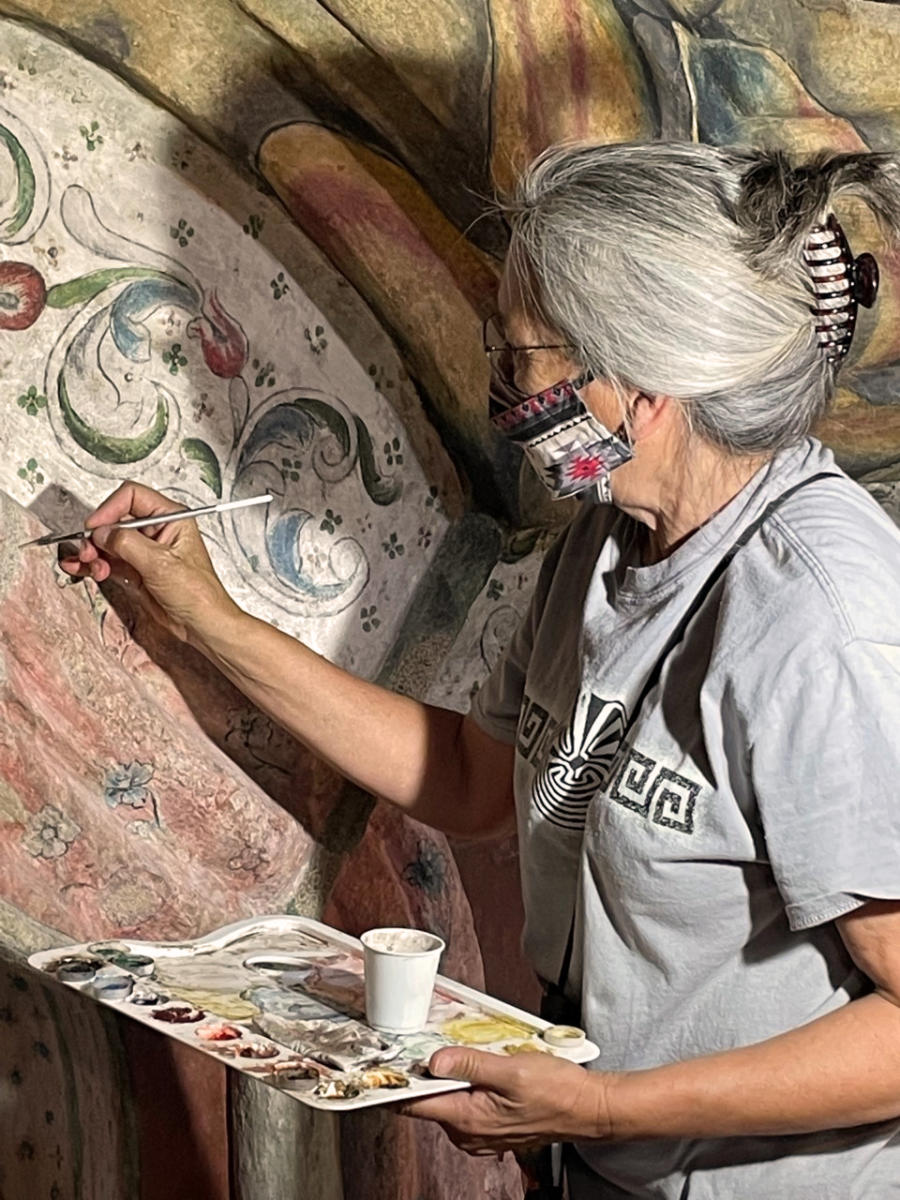By Edie Jarolim
Indigenous Team of Conservators Restore Historic Mission
For Timothy Lewis, part of the team tasked with restoring and maintaining San Xavier del Bac Mission, the need to preserve the National Historic Landmark is personal. Lewis is one of the Tohono O’odham people, whose ancestors helped build the mission in the 18th century, more than 100 years after it was founded by Father Eusebio Kino. Lewis has been in awe of the church since he was a child and attended Mass there, which makes his work as one of the mission’s conservators and committee member for the celebratory feast days all the more meaningful. The project is also a family affair for Lewis. The three-member conservation team consists of Lewis, his wife Matilde Rubio, and his niece Susie Moreno.
Below: As a member of the Tohon O'odham nation, Timothy Lewis' work as a conservator of San Xavier del Bac is especially meaningful because he grew up attending church there.

Few mission churches in the Southwest still serve the indigenous communities for which they were founded, and none are as remarkable and historic as the so-called Dove of the Desert, which rises from the Sonoran Desert floor like a mirage just south of Tucson. The northernmost of the missions established by Father Kino, San Xavier is the best-preserved example of Spanish Colonial architecture in the U.S., with religious art so impressive it’s been compared to that in Rome’s Sistine Chapel.
Through a program created by Patronato San Xavier, the organization that has funded the mission’s restoration work since 1978, Lewis became an apprentice to an international team of conservators from New York’s Guggenheim Institute. He was among those who restored the art in the church’s East Transept in 1992 and recalls feeling more euphoric with each passing day.
Below: The Mission's ornate interior shows why it is often called "the Sistine Chapel of North America".

“I always thought of the church as dark and gloomy when I was a kid,” he said. “When the restoration revealed all the colors in the paintings, it was like a light went on.”
Eventually joining the international team in Europe, Lewis met Matilde Rubio, who has a degree in conservation from the University of Seville. The two worked on several projects together overseas before marrying and settling in Wa:k– the village where San Xavier del Bac is located –and starting their own art conservation and restoration business.
In 2016, following in the footsteps of her uncle, Susie Moreno signed on to the Patronato’s apprenticeship program. “I got hooked,” she said of her early days in the apprenticeship. “I was like a sponge, wanting to soak in more and more knowledge about the complex techniques involved.” Her apprenticeship led to her taking collegiate art history classes and Moreno is now working towards a bachelor's degree in sustainable-built environments, with an emphasis on heritage conservation.

Lewis and Rubio are heartened that Moreno has taken to art conservation with such enthusiasm. They aren’t getting any younger, Rubio notes, and the strenuous work takes its toll. They hope that, like Moreno, other members of the next generation of the Tohono O’odham community will consider a future of preserving San Xavier del Bac – a church they’ve dedicated their lives to, just like so many of their ancestors.
Learn more about Tucson Missions at VisitTucson.org/things-to-do/history-and-culture/missions-and-churches/.
